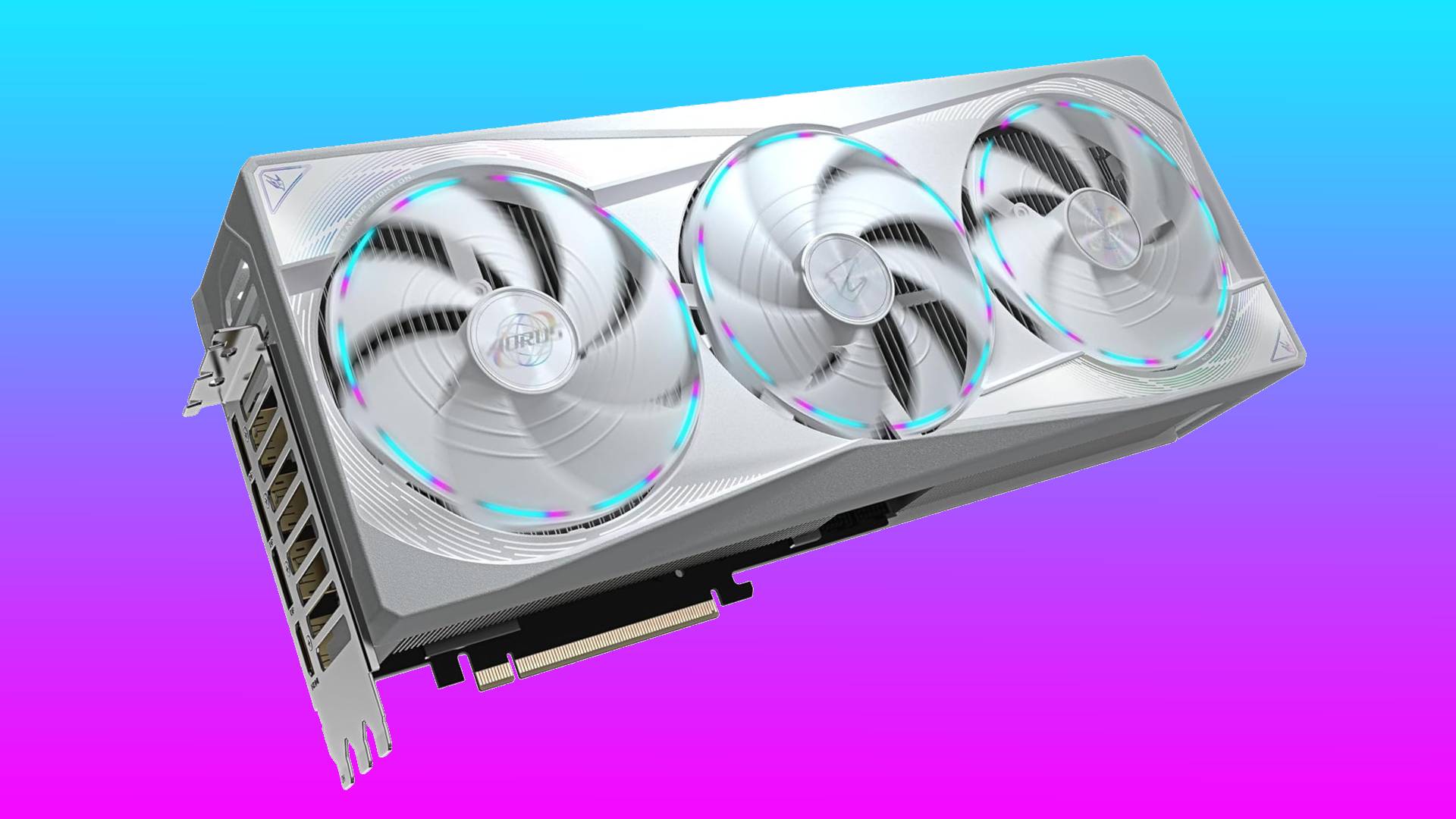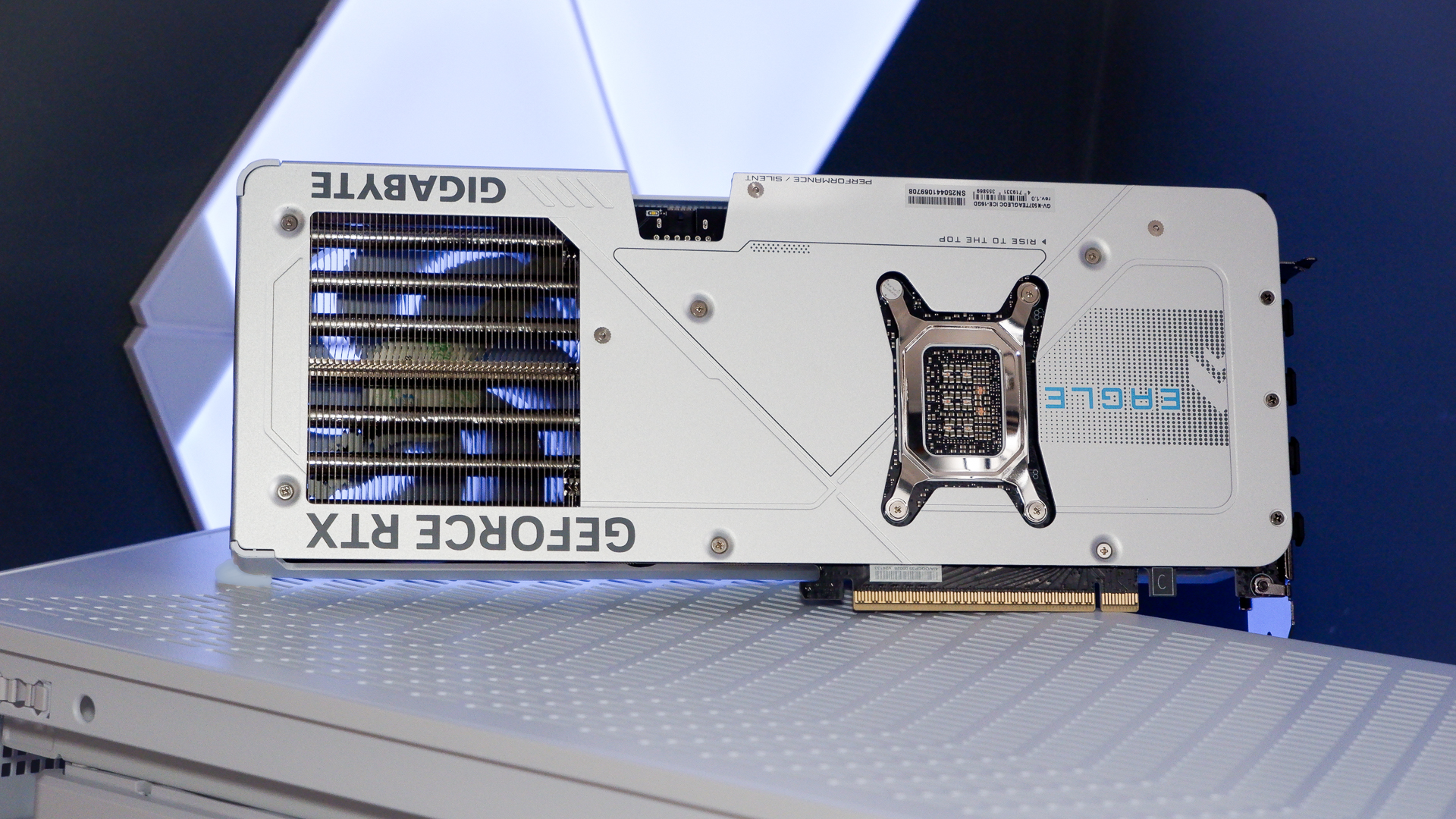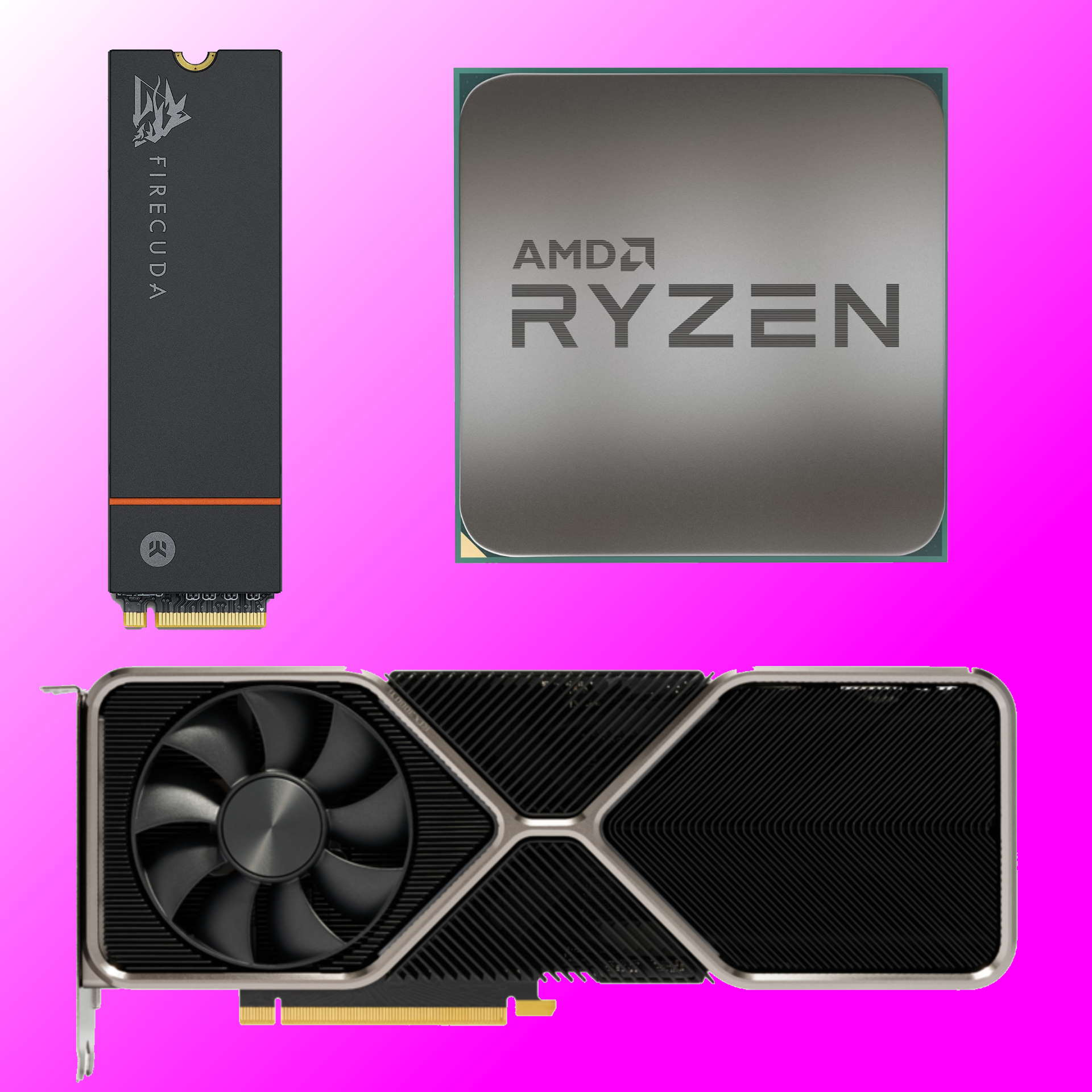
Not the worst thing you can clap eyes upon in your PC case, but not ideal.
Writing about hardware is an often humbling experience. More recently than I’d like to admit, I popped open a PC case only to ask ‘…what is that?’ Embarrassingly, that was my first encounter with a particularly stylish GPU riser bracket—a bit of kit that allows for vertical installation of your graphics card. Unfortunately for some folks with vertically mounted Gigabyte RTX 50-series cards, they’ve peeked inside their PC case only to see something far more worrying.
The saga began last month, when a translated post from a Quasar Zone user alleged that the thermal gel on their Gigabyte Aorus Master Ice RTX 5080 appeared to be “crawling out”. They claimed to have only had the card for a month, having used it to play World of Warcraft for about two hours every day—hardly the heaviest of performance loads. Now, a number of other users have taken to the TechPowerUp forum to share that the thermal gel on their Gigabyte cards also appears to be either melting or otherwise making a break for it (via Videocardz).
One TechPowerUp forum member, remekra, shared photos of thermal gel slippage on their vertically installed card. They write, “So far it does not overheat on memory modules. I will hold off sending it to Gigabyte service as I don’t have good memories of them, so until it overheats or stops working I will use it. But if you have a vertical case or stand then be aware.”
Rather than issue a recall of the affected cards, Gigabyte acknowledged the situation in a press release published last month. The company previously admitted, “In some early production batches for the GIGABYTE GeForce RTX 50 Series, a slightly higher volume of [the thermal] gel was applied to ensure sufficient thermal coverage.” The company claims the amount of thermal gel applied has since been adjusted, adding, “While the appearance of extra gel might be concerning, this cosmetic variance does not affect the card’s performance, reliability, or lifespan.”
In that April press release, the company also explained its thermal gel “is engineered to ensure optimal contact across uneven component surfaces, and is applied via a fully automated process to minimize human variance compared with traditional thermal pads.”
The company also attempted to reassure, “The thermal conductive gel is an insulating, deformable, putty-like compound. It is engineered to remain in place when applied properly, and can endure at least 150 °C before any melting or liquification could happen.”
Gigabyte also maintains its quality assurance testing is rigorous, accounting for not only performance under heavy loads, but “multi-axis drops and vibration testing,” as well as “vertical and horizontal installation orientations.”
While I have yet to find any reports of this thermal gel slippage negatively impacting the function or performance of Gigabyte’s RTX 50-series, it’s far from an ideal situation. For one, components that should’ve been covered by the thermal gel now potentially aren’t, which may impact the long-term performance of the card itself. For another, this gel could possibly continue to slip into crevices within your PC case that would be a mission to clean at best. That said, we don’t yet know just how widespread this thermal gel slippage actually is.
So, let’s stick to what we do know: Gigabyte’s 50-series cards have been available for not even three months, with the Gigabyte Aorus Master Ice RTX 5080 mentioned up top costing as much as $1,900 from Amazon right now. That’s a lot of money to spend on a card with such a concerning issue—cosmetic or otherwise.
Right now, it doesn’t seem like a major disaster of melting cable proportions—we’ve no data about the GPUs performing notably worse over time, or whether the compound has, in fact, leaked entirely from the necessary contact points—but it’s still not a great look for the company especially when we are talking about some very expensive graphics cards.
Best CPU for gaming: Top chips from Intel and AMD.
Best gaming motherboard: The right boards.
Best graphics card: Your perfect pixel-pusher awaits.
Best SSD for gaming: Get into the game first.





